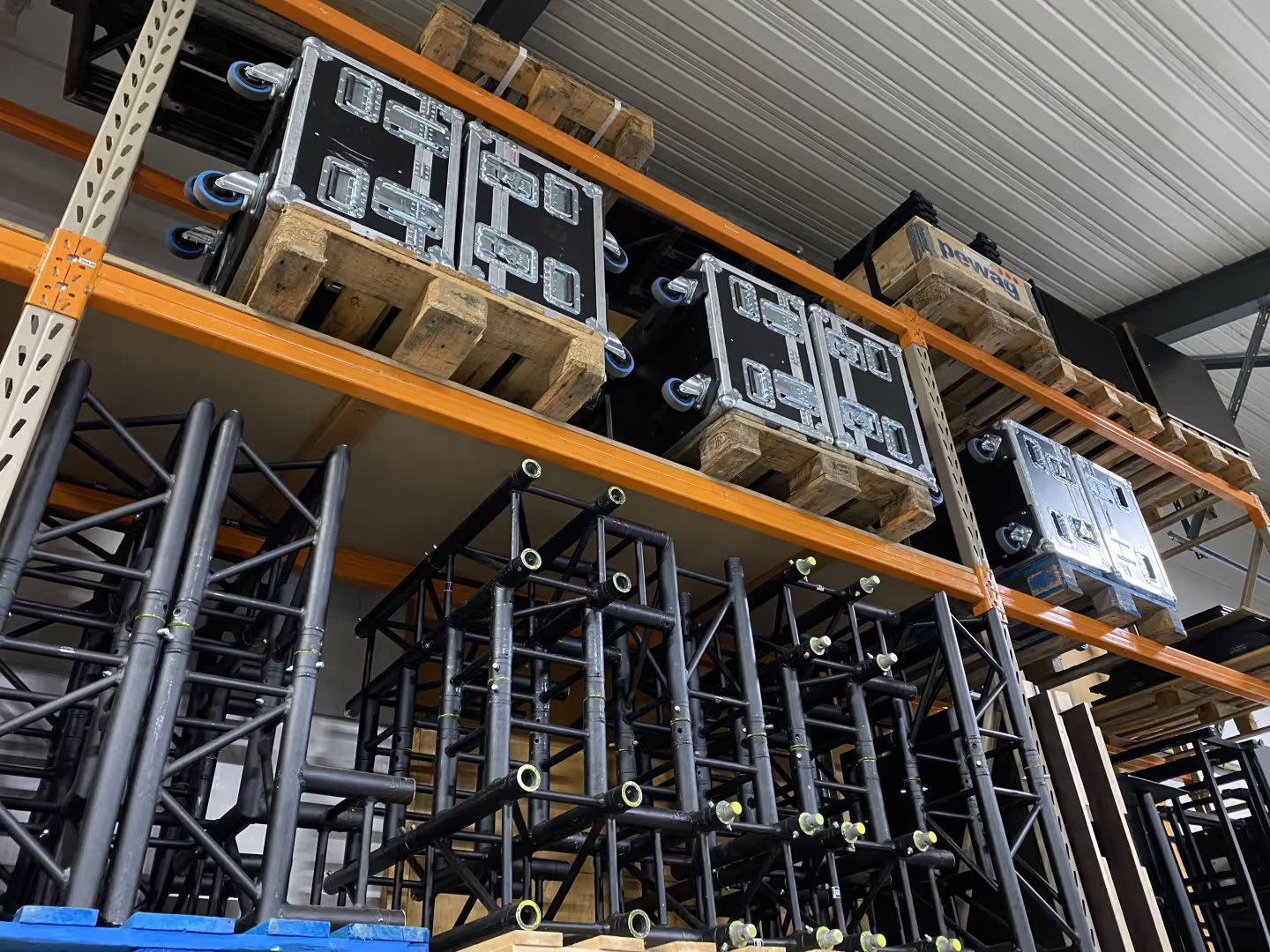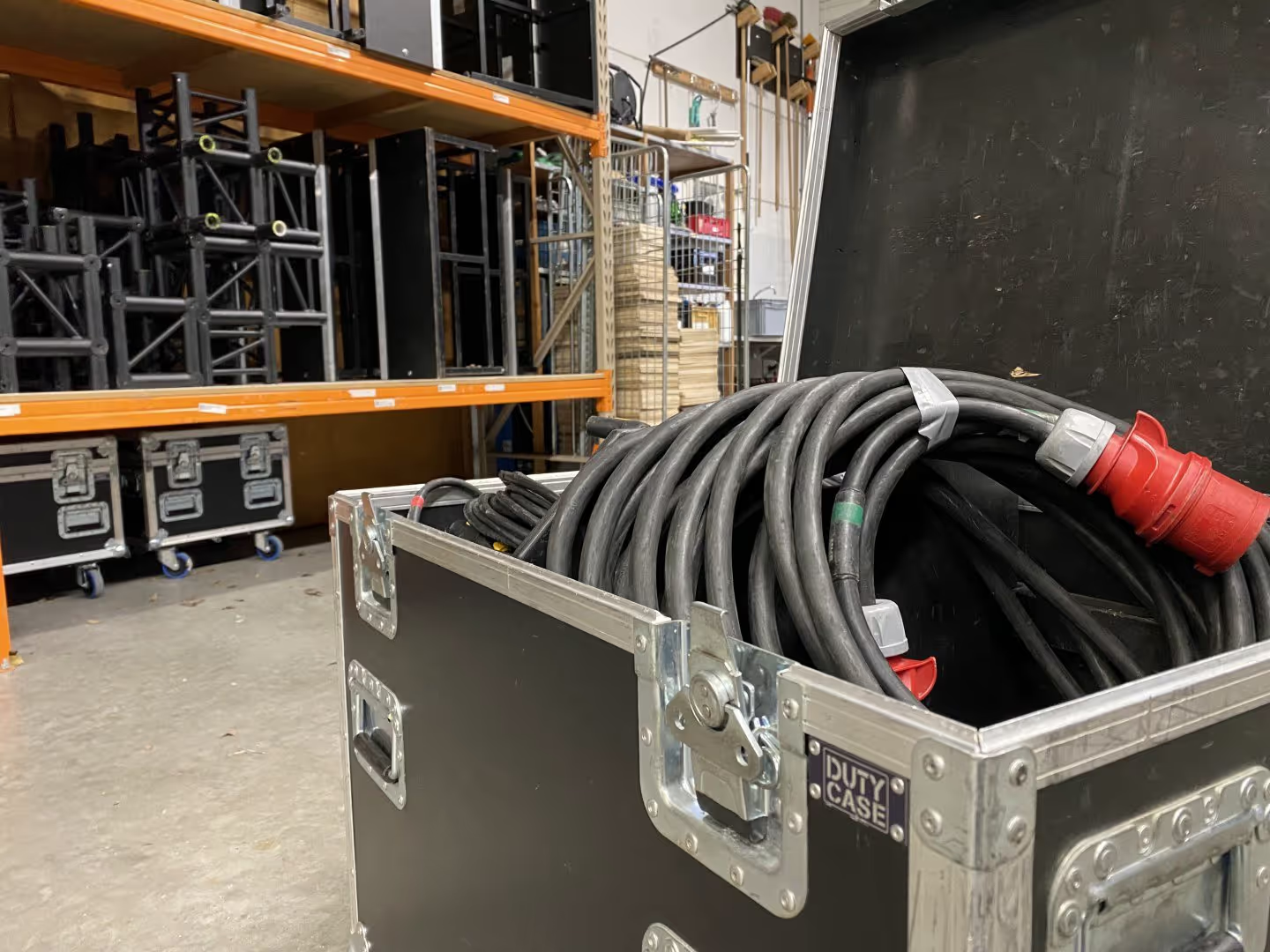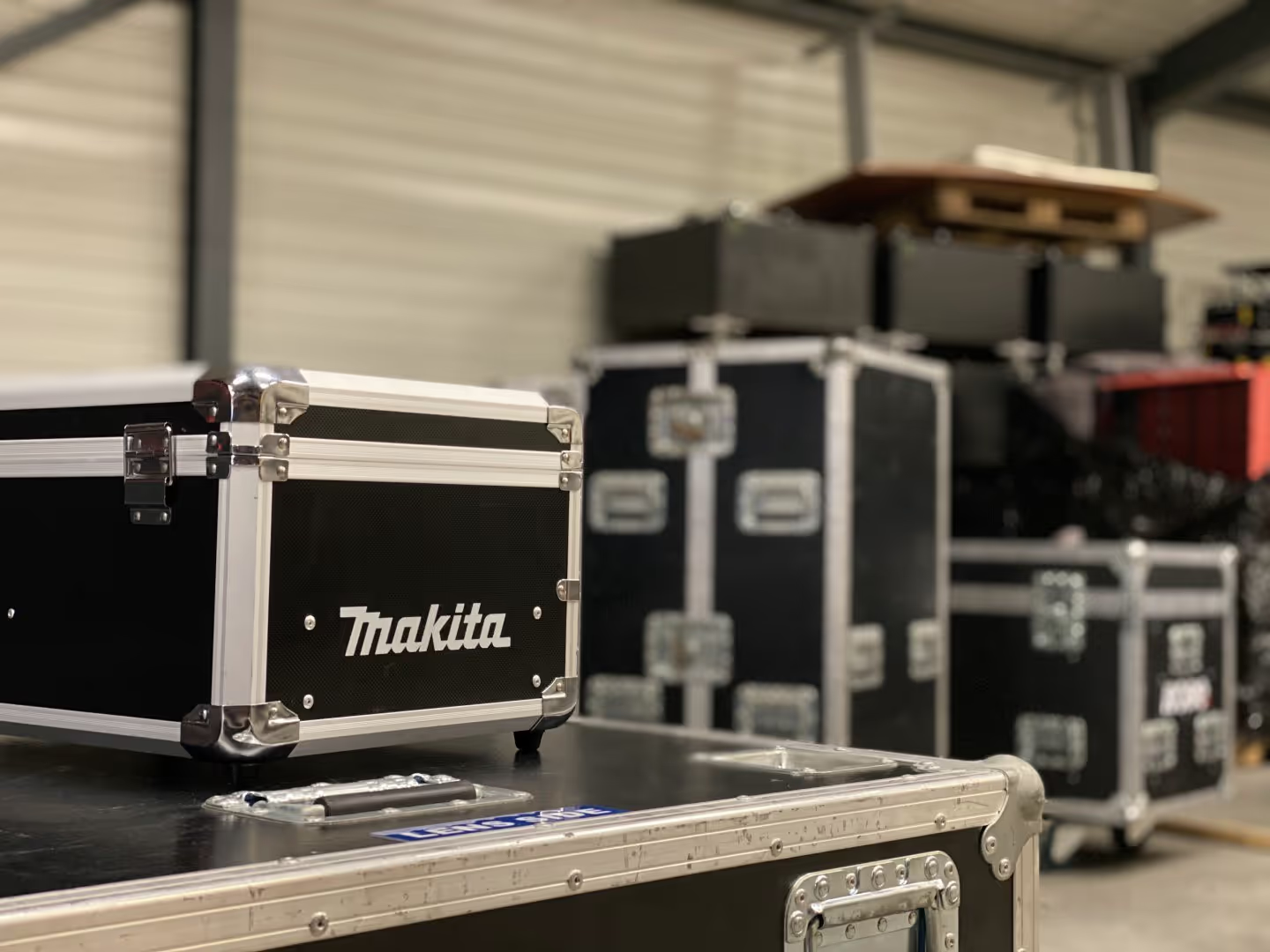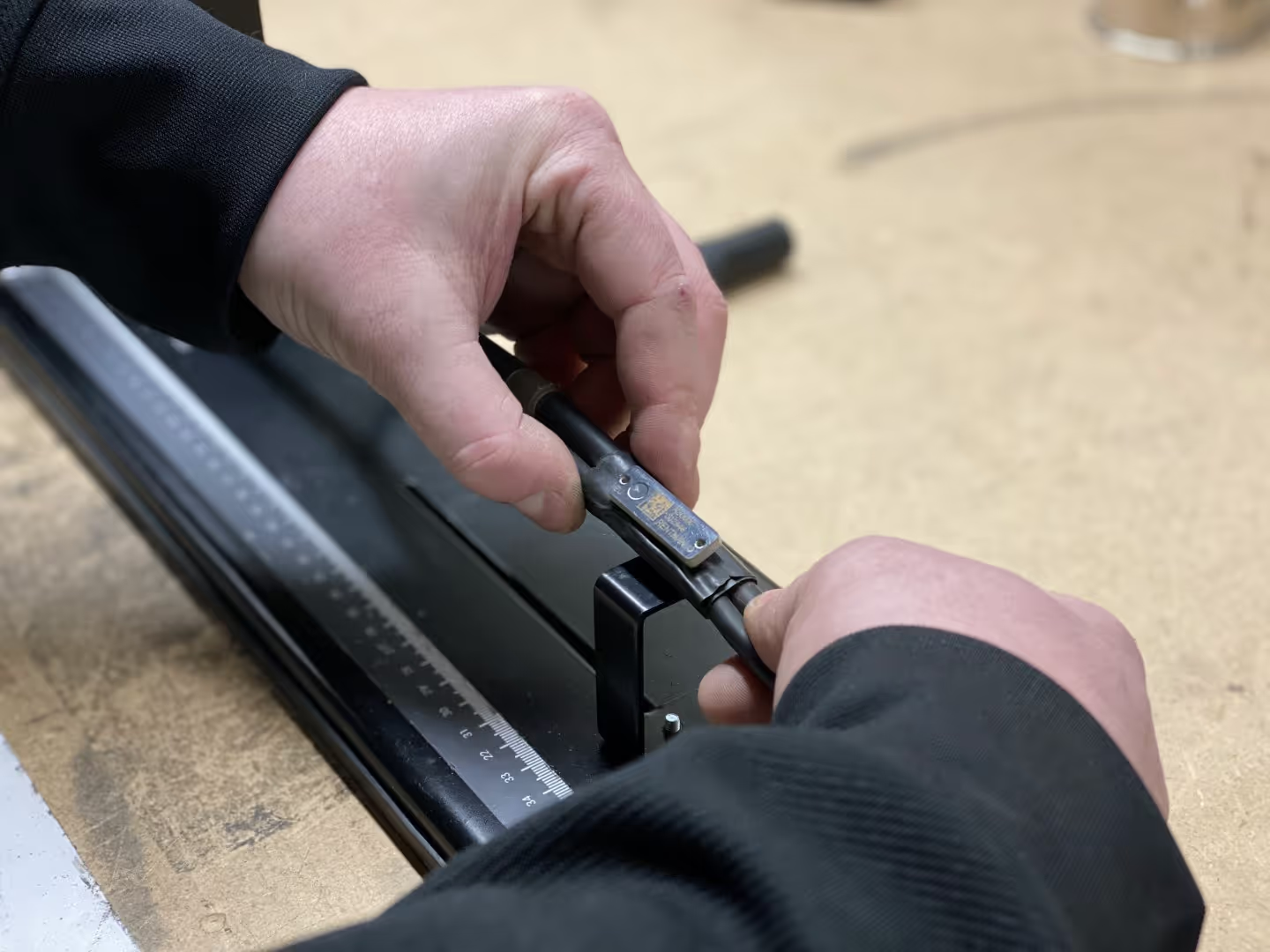Understanding AV Equipment Lease Agreements: A Practical Guide

An equipment lease agreement is a vital legal document for businesses in the event industry that need to use specialized machinery or tools without purchasing them outright. This type of contract allows a lessee, such as an event planner or production company, to use equipment owned by another party, the lessor, under agreed-upon terms. Understanding the nuances of these agreements is crucial for avoiding potential pitfalls and ensuring smooth operations during events.
In this guide, we will explore what an equipment rental or lease agreement entails, provide practical examples relevant to event planning, and offer insights into negotiating favorable terms. By the end, you should feel confident in navigating these agreements, whether you’re leasing a single sound system or a fleet of lighting rigs.
1. Introduction to Equipment Lease Agreements
2. Key Components of a Lease Agreement
3. Types of Equipment Lease Agreements
4. Benefits and Drawbacks of Leasing
5. Practical Tips for Leasing Equipment
Introduction to Equipment Lease Agreements
What is an Equipment Lease?
An equipment lease is a contractual arrangement where one party, the lessee, obtains the right to use equipment owned by another party, the lessor, for a specified period. Instead of purchasing the equipment outright, the lessee pays periodic rental fees, which can be structured monthly, quarterly, or per event.
This arrangement is particularly beneficial for businesses in the event industry that require expensive equipment—such as audio-visual systems, staging, or lighting—but wish to avoid the upfront costs associated with purchasing. Equipment leasing can cover a wide range of items, from basic furniture and decor to specialized event technology. It often involves a detailed agreement that includes terms regarding the duration of the lease, the cost of leasing, registration fees, maintenance responsibilities, and conditions for returning the equipment.
By understanding these fundamental aspects, event professionals can better determine whether leasing is a suitable option for their operational needs. An equipment lease agreement example can help illustrate how these terms are structured in practice.
Importance of Leasing Equipment
Leasing equipment presents several advantages, making it an attractive option for many businesses in the event industry. Firstly, it allows companies to preserve cash flow by avoiding large initial investments. This is crucial for startups and small event planning businesses that might have limited capital.
Additionally, leasing provides the flexibility to upgrade to the latest technology with greater ease. As event technology rapidly evolves, being able to switch to newer models without the burden of ownership can keep businesses competitive. Furthermore, leasing can offer tax benefits, as lease payments might be deductible as business expenses. This can lead to reduced taxable income, providing financial relief. Moreover, leasing can simplify budgeting and forecasting, as it involves predictable and fixed payments over the lease term.
Finally, leasing agreements for equipment description often include maintenance and servicing, reducing the burden on in-house resources. By exploring an equipment lease agreement example, event planners can gain further insights into how these benefits are realized in real-world scenarios.
Common Terms in Lease Agreements
Understanding the common terms in lease agreements is essential for ensuring all parties involved in the event industry are clear on their obligations and rights. A typical equipment lease agreement includes the lease term, which specifies the duration the equipment will be leased, often tied to event dates.
Another key term is the rental amount, detailing how much the lessee must pay and the payment schedule, which may vary depending on the duration and type of equipment. The agreement will also outline responsibilities for maintenance and repairs, indicating whether the lessor or lessee is accountable for ensuring the equipment remains in good working order during the event.
Additionally, the agreement will cover insurance requirements, stipulating whether the lessee must insure the equipment against damage or loss while in use. Clauses on termination conditions are also common in equipment rental agreements, explaining the circumstances under which the lease can be ended before the agreed term.
Lastly, an equipment lease agreement example may include stipulations around the return of the equipment, ensuring it is returned in satisfactory condition, ready for future events. Understanding these terms is crucial for a smooth leasing experience in the event industry.
Key Components of a Lease Agreement
Lease Duration and Terms
The lease duration and terms are fundamental elements in any equipment lease agreement relevant to the event industry. The lease duration specifies how long the lessee, such as an event planner or production company, is entitled to use the equipment. This period can range from a few days for a single event to several years for recurring events, depending on the agreement and nature of the equipment. Shorter lease terms offer flexibility, allowing businesses to upgrade or change equipment more frequently, which is particularly useful when planning different types of events.
Conversely, longer terms may provide cost benefits through lower monthly payments. Alongside the duration, the lease will outline specific terms, including start and end dates aligned with event schedules, renewal options, and any penalties for early termination. These terms ensure both parties have a clear understanding of their commitments.
For instance, an equipment lease agreement example might feature renewal clauses that allow the lessee to extend the lease under predefined conditions, such provisions being essential for ongoing event needs. Such details are crucial for planning and can significantly impact a business’s operational and financial strategies. Understanding these aspects helps in making informed leasing decisions.
Payment Structures and Options
Payment structures and options in an equipment lease agreement are crucial factors that determine the financial feasibility of the lease for a business in the event industry. Typically, the agreement will outline the rental fee and the frequency of payments, which could be monthly, quarterly, or per event. Fixed payments offer predictability, allowing businesses to budget effectively for their event costs, while variable payments might be tied to specific conditions, such as the duration of use or the type of equipment.
Additionally, some equipment leases may include a deposit or initial fee, or security deposit, which is often refundable at the lease’s end, provided the equipment is returned in good condition after the event. The agreement might also offer options such as a balloon payment at the end of the lease or the opportunity to purchase the equipment if it meets ongoing needs. An equipment lease agreement example can highlight these variations, illustrating how different payment options can be structured.
Understanding these payment structures ensures that event planners can choose an arrangement that aligns with their cash flow and financial strategy.
Maintenance and Repairs Responsibilities
Maintenance and repairs are critical considerations in an equipment lease agreement, as they ensure the equipment remains functional and safe for use during events. The agreement typically specifies who is responsible for routine maintenance and any necessary repairs. In some cases, the lessor may handle all maintenance activities, including repairs and ensuring that the equipment is serviced regularly by professionals, which can be beneficial for lessees who lack the expertise or resources to maintain the equipment themselves.
Alternatively, some agreements may place the responsibility for such repairs on the lessee, requiring them to adhere to a specified maintenance schedule tailored to event usage. The lessee must also manage any repairs arising from regular use during events, while damage beyond normal wear and tear might incur additional charges.
By examining an equipment lease agreement example, event professionals can better understand how these responsibilities are divided. Clear stipulations regarding maintenance and repairs prevent misunderstandings and ensure the equipment’s longevity throughout the lease term, contributing to the overall success of events.
Types of Equipment Lease Agreements
Capital vs. Operating Leases
Understanding the distinction between capital and operating leases is vital when entering an equipment lease agreement in the event industry. A capital lease, also known as a finance lease, is treated like a purchase for accounting purposes. This type of lease typically includes a transfer of ownership to equipment owner, at the end of the lease term, and the lessee may claim depreciation and interest on expenses incurred on the equipment.
Capital leases often involve higher monthly payments but result in asset ownership, which can be beneficial for businesses planning to use the equipment for multiple events over time. Conversely, an operating lease is more akin to a rental agreement, where the lessee uses the equipment for a specific period without gaining ownership. Operating leases usually feature lower monthly payments and are considered off-balance-sheet financing, meaning they do not appear as liabilities on the lessee’s balance sheet.
This can be advantageous for event companies looking to maintain a healthier financial appearance while managing costs. Reviewing an equipment lease agreement example can help clarify how these types of leases are structured and their implications for financial reporting in the event sector.
Example of an Equipment Lease Agreement
To illustrate, consider an equipment lease agreement example for leasing event technology, such as audio-visual equipment. The agreement begins with details about the lessor and lessee, including their contact information. It then specifies the leased equipment, such as a high-definition projector and sound system. The lease term is set for a weekend event, with an option to extend for additional days if needed.
Monthly payments are outlined, including the due date and acceptable payment methods, possibly structured as a flat fee for the event duration. The equipment lease agreement also stipulates that maintenance and minor repairs during the event are the lessee’s responsibility, while the lessor covers major repairs and servicing. Insurance requirements are detailed, ensuring the lessee insures the equipment for its full replacement value during the event.
Additionally, the agreement includes termination conditions, stating that early termination incurs a penalty fee. Upon lease completion, the equipment must be returned in good working condition, subject to inspection. This equipment lease agreement example provides a practical framework for understanding how such contracts are structured and negotiated within the context of event planning.
Choosing the Right Lease for Your Needs
Selecting the appropriate equipment lease agreement depends on several factors specific to the event industry, including your business’s financial situation, operational requirements, and future plans. Start by assessing whether a capital or operating lease better aligns with your event planning goals. If long-term ownership and asset accumulation are important for your business, a capital lease might be more suitable, especially for frequently used equipment.
On the other hand, if you prefer lower monthly payments and the flexibility to upgrade equipment frequently to meet diverse client needs, an operating lease could be the better option. Consider the type of equipment you need for events and its expected lifespan; for rapidly evolving technology, an operating lease allows for easier upgrades without significant financial commitment. Evaluate the total cost of the lease, including any potential fees for maintenance, repairs, insurance coverage and early termination of the agreement.
Additionally, review your cash flow and budget to ensure the lease payments are manageable alongside other event-related expenses. By carefully analyzing these factors, you can choose an equipment lease agreement that best supports your business’s growth and operational efficiency in the competitive event industry.
Benefits and Drawbacks of Leasing
Advantages of Leasing Equipment
Leasing equipment offers several advantages, making it a strategic choice for many businesses in the event industry. Primarily, leasing conserves capital, allowing event planners and production companies to use their funds for other critical operations instead of tying up significant amounts in equipment purchases.
This can be especially beneficial for small businesses and startups with limited budgets, enabling them to invest more in marketing and event execution. Leasing also provides flexibility, enabling businesses to adapt quickly to changing needs or technological advancements without being burdened by outdated equipment.
Furthermore, lease payments are often tax-deductible as a business expense, reducing the overall tax liability. Predictable lease payments simplify budgeting and financial planning, allowing event professionals to manage cash flow more effectively.
Additionally, leasing arrangements might include maintenance and repair services, alleviating the burden on company resources during busy event seasons. Exploring an equipment lease agreement example can provide further insight into these benefits, illustrating how leasing can be tailored to meet specific event requirements, thereby enhancing operational efficiency and financial performance.
Potential Disadvantages to Consider
While leasing equipment provides several benefits, there are potential disadvantages that businesses in the event industry should weigh carefully. One of the primary drawbacks is the total cost over time. Leasing can be more expensive in the long run compared to purchasing, especially if the equipment is needed for an extended period or for multiple events.
Unlike ownership, leasing does not build equity, meaning businesses do not have an asset to show for their payments once the lease term ends. Additionally, lease agreements can be inflexible, potentially including penalties for early termination or restrictions on equipment use, which can disrupt event planning. There might also be limitations on customizing or modifying leased equipment, which can be restrictive for event planners with specific design or technical requirements.
Furthermore, reliance on leased equipment can lead to dependency on the leasing company for repairs and maintenance, which may not always align with the lessee’s timelines or standards. Understanding these disadvantages through an equipment lease agreement example can help businesses make informed decisions about whether leasing is the most suitable option for their events.
Comparing Leasing to Buying
When deciding between leasing and buying equipment, businesses in the event industry must consider several factors. Buying equipment involves a significant upfront cost but provides ownership, which can be advantageous for long-term use, especially for items frequently used in multiple events. Ownership allows for customization, unrestricted use, and the potential for resale, which can help recoup some of market value of the investment.
On the other hand, leasing requires lower initial expenditure, preserving capital for other needs, such as hiring staff or marketing efforts. Leasing also offers flexibility, enabling businesses to upgrade to newer models more easily, which is particularly beneficial in an industry with rapid technological advancements in event technology and production.
However, the total cost of leasing might be higher over time, and businesses do not build equity in the equipment. Lease agreements may include restrictions and penalties that do not apply when purchasing outright. By examining an equipment lease agreement example alongside purchase options, event professionals can make a well-rounded decision that aligns with their financial health, operational needs, and long-term strategy.
Practical Tips for Leasing Equipment
Evaluating Lease Agreements
Evaluating lease agreements thoroughly is essential to ensure they meet your business needs in the event industry. Start by closely reviewing the lease term and payment schedule to determine if they align with your financial planning and cash flow, especially during peak event seasons. Scrutinize the responsibilities for maintenance and repairs to understand who bears the costs own risk and obligations; this is critical when dealing with equipment that is vital for event execution.
Additionally, check for any hidden fees or penalties, such as charges for early termination or exceeding usage limits during the rental period, which can significantly affect your event budget. It’s also crucial to examine the renewal options and end-of-lease conditions, including the process and costs associated with returning the equipment.
Comparing multiple lease agreements can provide a clearer picture of market rates and terms tailored for event services. An equipment lease agreement example can serve as a useful reference, highlighting standard clauses and potential red flags relevant to the events industry. By evaluating these aspects carefully, you can negotiate more favorable terms and avoid unforeseen complications, ensuring the lease agreement supports your business objectives effectively.
Negotiating Lease Terms
Negotiating lease terms is a critical step to ensure the equipment rental agreement is favorable for your event business. Start by clearly understanding your needs and limitations, such as the types of events you plan to host and the specific equipment required. Use this information to negotiate the lease duration, aiming for flexibility with renewal options to accommodate seasonal demands.
Discuss payment structures, seeking terms that align with your cash flow, such as lower initial payments or longer intervals between payments to match your event schedules. Address maintenance and repair responsibilities, negotiating to minimize your liabilities, especially during high-demand periods. It’s also wise to negotiate clauses related to early termination, ensuring penalties are reasonable or, if possible, avoided altogether.
Additionally, clarify the terms for equipment upgrades or replacements, particularly if you are leasing technology that evolves quickly, such as sound systems or lighting equipment. Reviewing an equipment lease agreement example can provide insights into standard practices and areas where negotiation is possible.
By preparing your equipment hire agreement thoroughly and approaching the negotiation with a clear strategy, you can secure terms that benefit your business and mitigate potential risks, ensuring a smooth leasing experience for your events.
Common Mistakes to Avoid
When entering an equipment lease agreement, avoiding common pitfalls can save your event business from unnecessary complications and expenses. One frequent mistake is not thoroughly reading and understanding the entire contract. Every clause of entire agreement matters, so scrutinize the terms, especially those related to payment schedules, maintenance responsibilities, and end-of-lease conditions, as they can significantly impact event operations.
Another error is overlooking the total cost of the lease, including hidden fees and penalties, which can make an initially attractive deal costly over time, especially when managing multiple events. Businesses might also fail to compare multiple offers, missing out on more favorable terms that better suit their event planning needs. Additionally, neglecting to assess the equipment’s suitability and technological relevance can lead to challenges if the equipment becomes obsolete during the lease term.
Finally, not negotiating terms that align with your business’s operational needs and financial capacity can result in a burdensome agreement. By being mindful of these potential mistakes and reviewing an equipment lease agreement example, you can enter a lease that supports and enhances your business operations in the dynamic event industry.
FAQ
Frequently asked questions
No items found.
Previous blog posts

The Essential Guide to Choosing the Right Labelling Equipment for Your Event Rental Business
The Essential Guide to Choosing the Right Labelling Equipment for Your Event Rental Business

The Ultimate Guide to Equipment Coverage in the Event Industry: What You Need to Know
The Ultimate Guide to Equipment Coverage in the Event Industry: What You Need to Know

